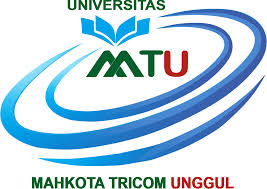Increase the Understanding of University Students on Quadruple Helix and Mosque-Based Economic Empowerment to Boost Potential in Solving Economic Problems
DOI:
https://doi.org/10.55927/ajcs.v3i1.8032Keywords:
Mosque, Quadruple Helix, Economic Empowerment, Philanthropreneur ModelAbstract
This activity was organized by the "ZISWAF Laboratory" of the Indonesian Islamic University (UII) in collaboration with Amil Zakat Institution "Dompet Dhuafa". The aim of implementing the activity is to provide insight into the synergy of the Quadruple Helix in mosque-based economic empowerment. The participants are new Islamic Economics study program students at Universitas Islam Indonesia. This community service was planned offline but was done online because of funding constraints. A total of 99 participants joins the program on the Zoom platform. The speakers suggest that students can be involved in mosque-based economic empowerment by turning mosques around campus into living laboratories, and academics can play a role in research to test the financial & social impact of empowerment programs. Participants stated that this activity was very beneficial, and their knowledge of the topic increased after the activity.
Downloads
References
Chakraborty, R., & Abraham, R. (2021). The impact of financial inclusion on economic development: the mediating roles of gross savings, social empowerment and economic empowerment. International Journal of Social Economics, 48(6), 878–897. https://doi.org/10.1108/IJSE-02-2020-0077
Chandra, E., Handayani, A. D., & Istiqomah, I. (2022). Strengthening the mosque-based community economy in Cirebon City. Community Empowerment, 7(6), 1033–1038. https://doi.org/10.31603/ce.6860
Fahmi, R. A., Kyai, J. L., Abidin, H. Z., & Rochmiatun, E. (2023). Mosque-based Economic Empowerment in the Malay World: Views of Ibnu Khaldun’s Asabiyah and Malik Bennabi’s Civilization Theories. Al-Qalam Jurnal Penelitian Agama Dan Sosial Budaya, 29(1), 88–101.
Kasri, R. A., & Ramli, U. H. (2019). Why do Indonesian Muslims donate through mosques?: A theory of planned behaviour approach. International Journal of Islamic and Middle Eastern Finance and Management, 12(5), 663–679. https://doi.org/10.1108/IMEFM-11-2018-0399
Lal, T. (2021). Impact of financial inclusion on economic development of marginalized communities through the mediation of social and economic empowerment. International Journal of Social Economics, 48(12), 1768–1793. https://doi.org/10.1108/IJSE-12-2020-0830
Prima Hadi Putra. (2023, May 24). Berdaya dari Desa. Retrieved from https://www.dompetdhuafa.org/berdaya-dari-desa
Soya Sobaya, Rahmani Timorita Yulianti, & Rizqi Anfanni Fahmi. (2022). Sinergi Quadruple Helix dalam Pemberdayaan Ekonomi Berbasis Masjid. Quantum Media Aksara.
Utami, L. D., Amin, M., Mustafiyanti, M., & Alon, F. (2023). Masjid Friendly: Mosque Based Economic Empowerment. Pengabdian: Jurnal Abdimas, 1(2), 97–106. https://doi.org/10.55849/abdimas.v1i2.186
Downloads
Published
How to Cite
Issue
Section
License
Copyright (c) 2024 Rakhmawati Rakhmawati, Ryan Yuniawan, Faiz Maulana Akmal, Fahri Hanif Rais Wibowo, Haya Aisyah Fatin, Fadhilah Angesti, M. Habib Marsan Hasibuan

This work is licensed under a Creative Commons Attribution 4.0 International License.












.png)


















